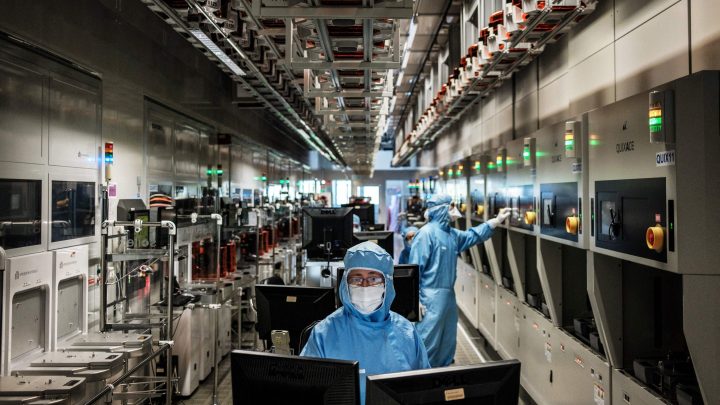
U.S. needs to invest in training, recruiting to expand semiconductor workforce
U.S. needs to invest in training, recruiting to expand semiconductor workforce

Chipmaker Nvidia reported this week that it doubled its quarterly revenue from a year ago. Its dominance in semiconductors for artificial intelligence is based on products that are manufactured overseas.
However, the United States is trying to shore up domestic semiconductor supply chains and address challenges in staffing. The Semiconductor Industry Association forecasts that by 2030, the field will face a shortage of 67,000 engineers, technicians and computer scientists.
To staff the growing industry, Sujai Shivakumar with the Center for Strategic and International Studies said the U.S. needs both high- and mid-skilled workers.
“These are areas where the United States has underinvested in its workforce,” he said.
One problem is the lack of visibility of those jobs, Shari Liss of the SEMI Foundation pointed out.
“When you talk to kids, they’ve grown up seeing, like, the pictures of the teachers and the firemen and the policemen,” she said.
To get the word out early on semiconductor jobs, her group hands out engineering kits to elementary school students — one has a pen that draws with conductive ink. “And we’ve developed about 45 pieces of curriculum that accompany those kits,” she said.
Community colleges also present enormous opportunities, said Arizona State University professor Trevor Thornton, who’s watching semiconductor fabrication plants go up in Phoenix.
“On the horizon on the west side, all you see are cranes building these new fabs. It’s amazing,” he said. “So pretty soon, we’re going to have to start populating with all the technicians and engineers they need.”
Thornton has partnered with Maricopa Community Colleges so that students looking to be technicians attend lectures there. “But then they come to ASU to do their sort of advanced lab component in our clean room,” he said, referring to an ultrasanitized space suitable for working with microelectronics.
Partnerships are also preparing engineering students for careers in semiconductors, said Peter Bermel, who directs Purdue University’s SCALE program — which connects universities, companies and government agencies.
“We’ve been running what we call like an internship matching program within SCALE, where we try to get students matched with internships that are of greatest interest to them personally,” Bermel said.
It’s a start in addressing a huge challenge for the industry — one prospective employee at a time.
There’s a lot happening in the world. Through it all, Marketplace is here for you.
You rely on Marketplace to break down the world’s events and tell you how it affects you in a fact-based, approachable way. We rely on your financial support to keep making that possible.
Your donation today powers the independent journalism that you rely on. For just $5/month, you can help sustain Marketplace so we can keep reporting on the things that matter to you.











